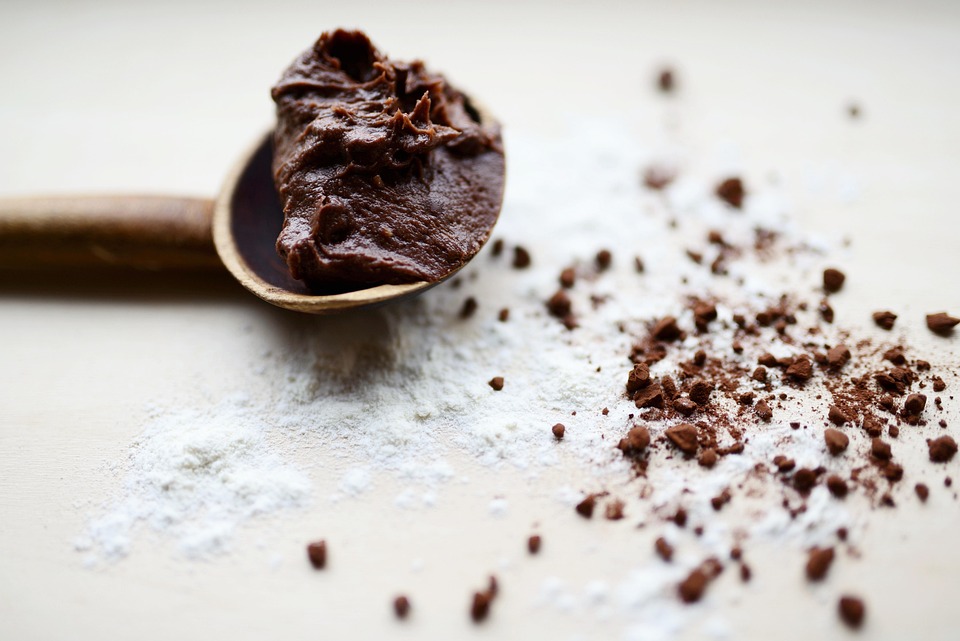How to export cocoa to Japan successfully requires a thorough understanding of Japanese import regulations, market preferences, and establishing reliable partnerships. This guide will provide a comprehensive overview of the key steps involved in exporting cocoa beans, cocoa powder, cocoa butter, and other cocoa-derived products to Japan.
I. Market Overview: Japan’s Cocoa Consumption and Demand
Japan is a significant consumer of cocoa and chocolate products. While Japan doesn’t grow cocoa domestically, it imports a substantial amount of cocoa beans, cocoa butter, and cocoa powder to meet the demand of its confectionery, beverage, and food industries. Key market trends include:
- Increasing Demand for High-Quality Cocoa: Japanese consumers are increasingly discerning and seeking premium, single-origin, and organic cocoa products. They appreciate unique flavor profiles and ethical sourcing practices. (Source: Japan External Trade Organization (JETRO) – Food Market Reports)
- Focus on Health and Wellness: There’s a growing interest in the health benefits of cocoa, particularly dark chocolate with high cocoa content. Products marketed with specific health claims related to antioxidants or flavonoids are gaining traction.
- Seasonal Demand: Chocolate consumption peaks during Valentine’s Day and Christmas, creating opportunities for exporters to capitalize on seasonal demand.
- Growing Interest in Craft Chocolate: The craft chocolate movement is gaining popularity in Japan, with a demand for artisanal chocolate made from ethically sourced and carefully processed cocoa beans.
II. Understanding Japanese Import Regulations and Standards
Navigating the regulatory landscape is crucial for successful exports. Here’s a breakdown of the key aspects:
- The Food Sanitation Act: This is the primary law governing food imports into Japan. It covers food safety standards, labeling requirements, and inspection procedures. Cocoa products must comply with these regulations to be allowed entry. (Source: Ministry of Health, Labour and Welfare (MHLW) – Japan Food Sanitation Act)
- Import Declaration: Importers are required to submit an import declaration to the customs authorities at the port of entry. This declaration must accurately describe the goods, their origin, value, and intended use.
- Inspection Requirements: The MHLW conducts inspections to ensure that imported food products meet Japanese safety standards. This may involve laboratory testing for contaminants, pesticide residues, and other harmful substances. Cocoa beans and processed cocoa products are subject to inspection.
- Labeling Requirements: All food products sold in Japan must be labeled in Japanese, providing information about the product name, ingredients, country of origin, net weight, manufacturer/importer details, and expiration date. Specific requirements apply to allergens and nutritional information.
- Customs Duties: Cocoa beans are generally subject to relatively low customs duties in Japan. However, processed cocoa products may attract higher rates. Consult the Japan Customs website for the latest tariff schedules. (Source: Japan Customs)
- Plant Quarantine: Cocoa beans are considered plant products and may be subject to plant quarantine inspections to prevent the introduction of pests and diseases. (Source: Ministry of Agriculture, Forestry and Fisheries (MAFF) – Plant Protection Law)
- Food Additives: Japan has strict regulations regarding the use of food additives. Ensure that any additives used in cocoa products are permitted and used within the prescribed limits.
III. Preparing Your Cocoa for Export
Meeting Japanese quality standards and consumer preferences is paramount:
- Quality Control: Implement rigorous quality control measures throughout the cocoa production process, from bean selection to processing and packaging. Ensure that your cocoa beans are free from defects, mold, and contamination.
- Moisture Content: Proper drying and storage are critical to maintain the quality of cocoa beans. The moisture content should be within the acceptable range (typically 7-8%) to prevent spoilage.
- Fermentation and Drying: Optimize fermentation and drying processes to develop desirable flavor profiles. Japanese consumers often prefer well-fermented cocoa beans with rich, complex flavors.
- Grading and Sorting: Grade and sort cocoa beans according to size, shape, and quality. This will help you meet the specific requirements of different buyers.
- Packaging: Use food-grade packaging materials that protect the cocoa from moisture, light, and pests. Ensure that the packaging is strong enough to withstand the rigors of transportation.
- Certification: Consider obtaining certifications such as organic, fair trade, or UTZ/Rainforest Alliance. These certifications can enhance your product’s appeal to environmentally and socially conscious consumers.
IV. Finding and Building Relationships with Japanese Importers and Distributors
Establishing strong partnerships is essential for long-term success:
- Market Research: Conduct thorough market research to identify potential importers, distributors, and manufacturers of chocolate and cocoa products in Japan.
- Trade Fairs and Exhibitions: Participate in relevant trade fairs and exhibitions in Japan to showcase your products and network with industry professionals. Key events include Foodex Japan and ISM Japan.
- Online Platforms: Utilize online platforms and directories to connect with Japanese buyers.
- JETRO Support: Leverage the services offered by JETRO (Japan External Trade Organization) to assist with market entry and partner identification.
- Direct Contact: Reach out to potential buyers directly with a well-crafted introduction, highlighting your product’s unique selling points and quality certifications.
- Cultural Sensitivity: Be mindful of Japanese business culture and communication styles. Patience, respect, and attention to detail are highly valued.
- Building Trust: Cultivate long-term relationships based on trust, reliability, and consistent quality.
V. Shipping and Logistics
Efficient and reliable shipping is crucial for timely delivery:
- Shipping Options: Choose the most appropriate shipping method based on cost, speed, and product requirements. Options include sea freight, air freight, and combined transport.
- Freight Forwarder: Work with a reputable freight forwarder experienced in handling food exports to Japan.
- Documentation: Ensure that all required documentation, including export permits, commercial invoices, packing lists, and certificates of origin, is accurate and complete.
- Insurance: Obtain adequate insurance coverage to protect your goods against loss or damage during transit.
- Customs Clearance: Coordinate with your importer or freight forwarder to ensure smooth customs clearance in Japan.
VI. Payment Terms and Currency Exchange
- Payment Terms: Negotiate payment terms that are mutually agreeable. Common options include Letters of Credit (LCs), Documentary Collections, and open account terms.
- Currency Exchange: Understand the risks associated with currency fluctuations and consider hedging strategies to mitigate potential losses.
VII. Key Considerations for Success
- Quality and Consistency: Maintain consistent quality and adhere to Japanese food safety standards.
- Competitive Pricing: Offer competitive prices while ensuring profitability.
- Effective Communication: Communicate clearly and promptly with your Japanese partners.
- Adaptability: Be prepared to adapt your products and marketing strategies to meet changing consumer preferences.
- Long-Term Commitment: View exporting to Japan as a long-term investment and be prepared to invest time and resources in building relationships and establishing a strong market presence.
VIII. FAQs
- What are the key documents required for exporting cocoa to Japan?
- Commercial Invoice
- Packing List
- Bill of Lading (for sea freight) or Air Waybill (for air freight)
- Certificate of Origin
- Phytosanitary Certificate (for cocoa beans)
- Health Certificate (if required by the importer)
- Import Declaration
- What are the common challenges faced by cocoa exporters to Japan?
- Meeting stringent quality standards
- Navigating complex import regulations
- Language and cultural barriers
- Competition from established suppliers
- Currency fluctuations
- How can I find reliable Japanese importers of cocoa?
- Attend trade fairs and exhibitions in Japan.
- Utilize online business directories and platforms.
- Contact JETRO for assistance.
- Network with industry associations.
- What certifications are most valued by Japanese buyers of cocoa?
- Organic certification
- Fair Trade certification
- UTZ/Rainforest Alliance certification
- What are the common packaging requirements for cocoa exported to Japan?
- Food-grade packaging materials
- Proper labeling in Japanese
- Protection against moisture, light, and pests
- How important is building relationships with Japanese importers?
- Extremely important. Building trust and long-term relationships are crucial for sustained success in the Japanese market. Focus on clear communication, reliability, and consistent quality.
- Where can I find the latest information on Japanese food regulations?
- The Ministry of Health, Labour and Welfare (MHLW) website is the primary source for information on Japanese food regulations.
- Japan Customs website provides information on import tariffs and procedures.
Exporting cocoa to Japan can be a rewarding venture for those who are well-prepared and committed to meeting the specific requirements of the Japanese market. By understanding the regulations, quality standards, and cultural nuances, exporters can build successful and sustainable businesses in Japan.





